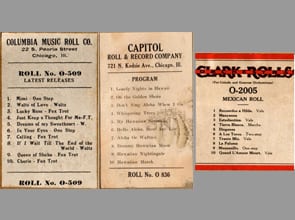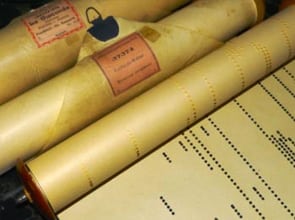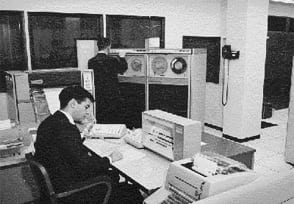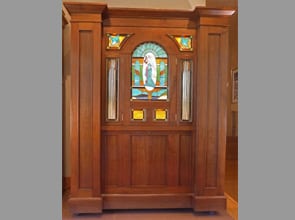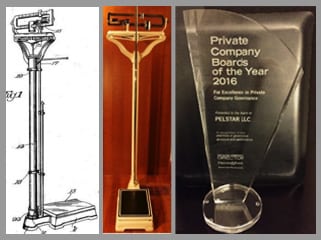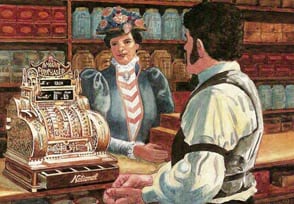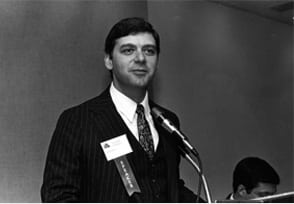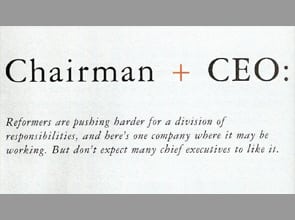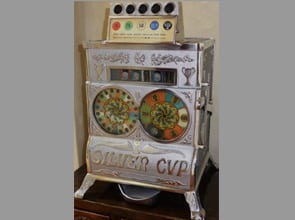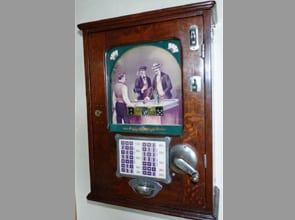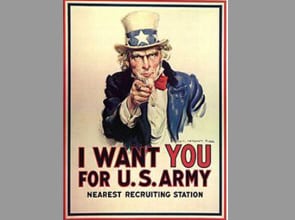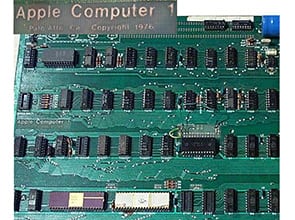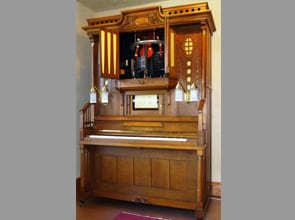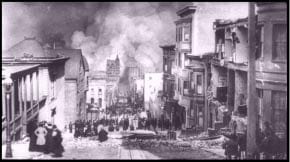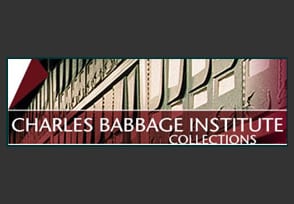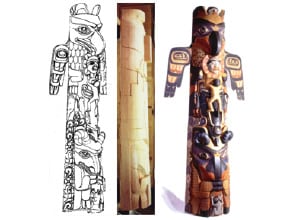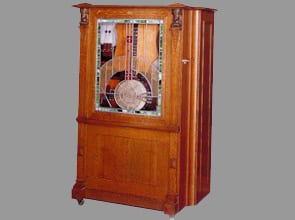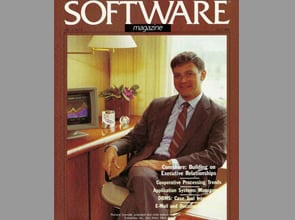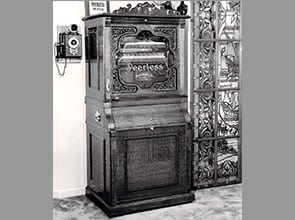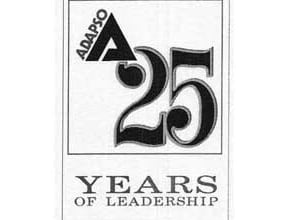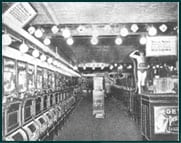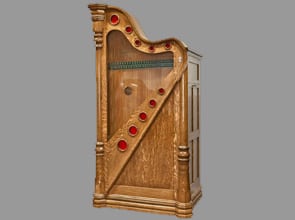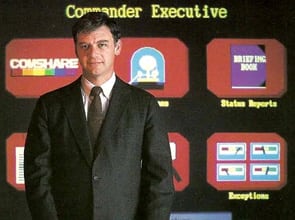-
Over 700 of the total 1270 “O” Rolls estimated ever made by QRS, Columbia, Capitol and Clark are catalogued and presented including tune composers.
-
The complete catalog of all 933 music rolls ever originally produced by Hupfeld for the Phonoliszt-Violina: Catalog Sorted by Roll Number Catalog Sorted by Composer. Also provided is the catalog of the 268 rolls chosen from over 20 collections and museums – and recut with the goal of producing the "reference set" of music for the PV.
-
First computer host to connect to the Internet; SDS 930; Scientific Data Systems; Stanford Research Institute (SRI); Bolt, Berenak & Newman IMP, IMP2; ARPA Network; Where the Wizards Stay Up Late;
-
The heyday of American coin-operated automatic music instruments was from 1898 – 1928. Perforated-paper music rolls were an important medium for national distribution of music including blues, jazz, rags and dance tunes. The Coinola SO “super orchestrion,” rare today, was the pinnacle of American-made music machines playing the highly-acclaimed Columbia and Capitol O-roll arrangements.
-
Pelstar, LLC: 97 Years of evolution from the original invention of the Health o meter™ doctor’s beam scale. In 2016 Pelstar was honored with the Private Company Board of the Year Award, growing at triple the market rate and achieving top market share in the Americas while practicing exceptional Board and Company governance. Rick Crandall, Executive Chairman
-
James Ritty invention of the cash register 1878; Incorruptible Cashier; Cash Recording Machine first cash register; National Cash Register Company (NCR) founded by John Patterson, history of marketing; Thomas Watson Sr. fired from NCR, founded IBM based on International Time Recording Company & Computer-Tabulating-Recording; Rick Crandall and Sam Robins authors. Out of print but some available: Purchase at https://www.rickcrandall.net/shop-3/
-
Founding of Comshare 1966; Rick Crandall timesharing pioneer; joint development with Tymshare, U. Cal. Berkeley; interactive computing; SDS930; SDS940; Scientific Data Systems Sigma 9; timesharing operating systems; early tech IPO in 1968; Crandall Chairman of ADAPSO; ITAA; transition to software products; System W; decision support system; multi-dimensional modeling; On Line Analytical Processing (OLAP), distributed computing; Xerox PARC; interactivity; EIS; Executive Information Systems.
-
Created by Charles Fey circa 1907 and followed by Caille in 1911, both seeking a departure from the onslaught of 3-reel slot machines. Fancy graphics and interesting play kept this machine in the lineup for over a decade.
-
The Domino is a payout gambling machine that was invented by an Englishman, based in France, manufactured in Germany and sold mainly for the U.S. market in the 1920’s.
-
The origins of the famous Uncle Sam national imagery and how it made its way into Arcade machine “art.” The very rare Caille and Howard Uncle Sam coin-operated strength tester machines.
-
Steve Wosniak and Steve Jobs invention of the Apple 1; formation of Apple Computer Company; major improvement over the Teletype; forshadowing the eventual decline of timesharing; Southwest Technical Products PR 40 alphanumeric printer for Apple I; Larry Nelson original Apple 1 owner and sale to Rick Crandall.
-
Phonoliszt-Violina: In the 1900 to 1930's the automatic music machine replaced live performers accelerated by union pressures for uneconomic rates for performers. Many types of player pianos, orchestrions, and violin and banjo players) grew rapidly as an early musical media for playing music in commercial locations and homes.
-
The 1890's: Pioneering risk-takers defined by the California Gold Rush; battle-tested by the 1906 earthquake; Charlie Fey invents the Liberty Bell slot machine creating an industry that persists to this day.
-
Starting in 1964 University of Michigan Computing Center; Joint development among Comshare (Rick Crandall), Tymshare (Tom O’Rourke, Dave Schmidt, Ann Hardy, Norm Hardy), SDS & U Cal Berkeley (Butler Lampson, Mel Pirtle and Peter Deutsch) in 1965 to 1966; start of multiplexors and networks; transition to software; IBM partnership; ADAPSO IIA merger attempt; partnership with Dow Jones; decision support systems; EIS and Xerox PARC; Enterprise Software Roundtable – software CEO roundtable
-
1915 coin-operated mechanical orchestra with banjo made by Engelhardt Piano Company; helped make ragtime a national music form;; music by National Music Roll Co.;
-
Comshare partnership with IBM; EIS marketplace; IBM Cooperative Software Agreement: competition in Executive Information Systems; Execuchart; EIS Briefing Book; IBM Systems Application Architecture, SAA partners; Dow Jones partnership with a software company; partnership with MSA Management Sciences America John Imlay; Comshare transition from timesharing to a software company.
-
The Peerless line of coin-op player pianos, nickelodeons and orchestrions were the earliest roll-operated coin-operated music machines on the market; Companies involved were the Roth & Engelhardt Co., Peerless Piano Player Co., National Music Roll Co., Engelhardt Seybold Co. and Engelhardt Piano Company.
-
History of computer software and services; competition with IBM, history of Adapso advocacy; formation and growth of ADAPSO; Non-tariff trade barriers; software as a distinct industry; software international balance of payments; example of ADAPSO helping ComShare transition to a software company
-
Caille coin-op machines; player pianos; coin-operated gambling; trade stimulators; Automatic Chime Bells; Toledo Orchestrion; Berliner Multiphone; music boxes;
-
The Automatic Harp invented by J.W. Whitlock and popularized by the Wurlitzer Company. Whitlock was a classic American inventor, business leader and entrepreneur who became the heart and soul of Rising Sun, Indiana in the early 1900’s. His life, his inventions, his boat-racing competitions on the Ohio River and his businesses are described in a storied life pursuing the American Dream. The Harp is an early automatic music machine that helped spread ragtime as a national music form.
-
influence of Xerox PARC visit in 1978; Xerox Alto; first mouse, icons, graphical human interfaces; GUI,WYSIWYG, development of Executive Information Systems 1984; EIS; touch screen graphical human factors; Commander EIS; Executive use of computers; executive computing; the CEO Goes On Line; Jack Rockart, business graphics; Strategic Information At Your Fingertips; Warren Mcfarlan at Harvard Business School teaching EIS; first ISV partnership with IBM Information Center; IBM marketing partnership with software; Comshare...
